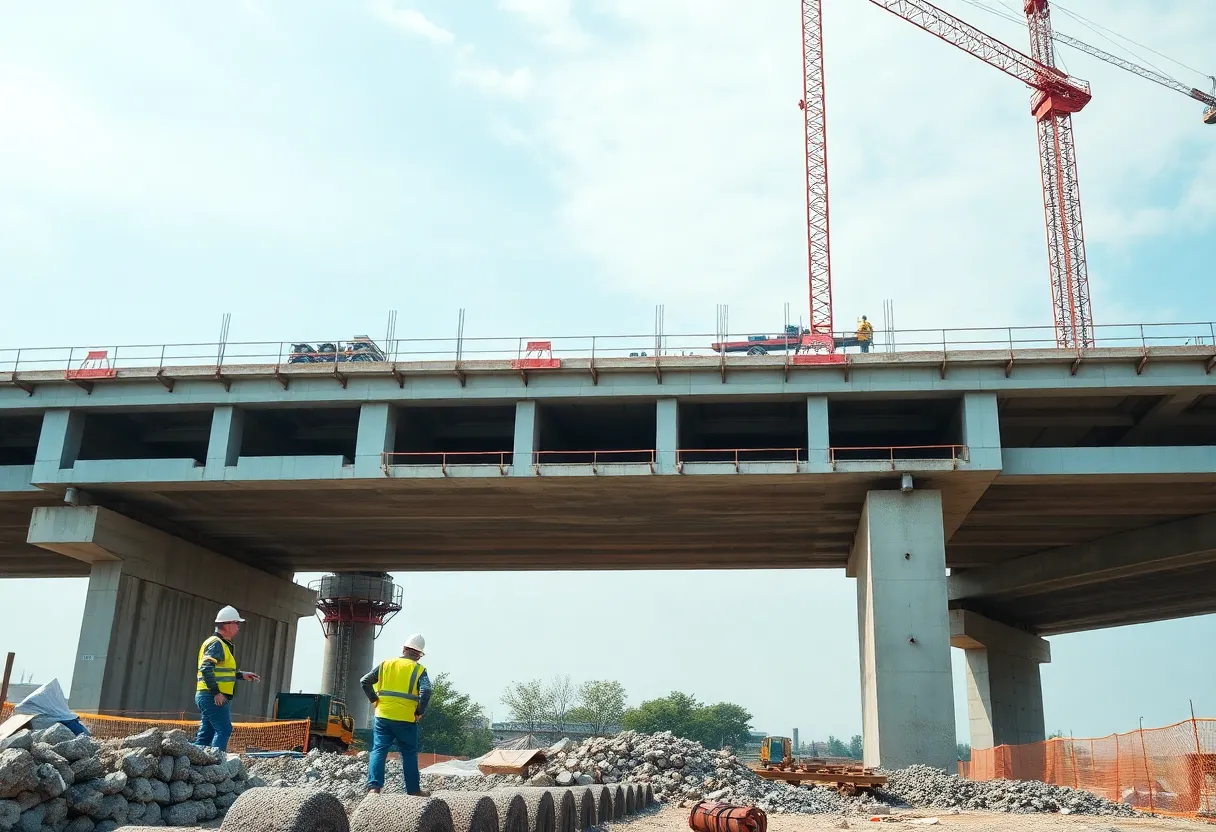News Summary
A recent study in Shenyang, China reveals key construction control parameters affecting prestressed concrete continuous girder bridges. By using finite element modeling, researchers identified temperature variations and prestressing loss as critical factors influencing structural alignment and stress distribution during construction. The study emphasizes the importance of real-time monitoring and suggests implementing early-warning thresholds to maintain safety and integrity of bridge structures. Recommendations for integrating advanced technologies like BIM and IoT are also discussed for improved construction management.
Shenyang, China — Comprehensive Analysis of Construction Control Parameters in Prestressed Concrete Continuous Girder Bridges Using Finite Element Modeling
A recent study conducted in Shenyang, China, has provided critical insights into the construction control parameters influencing the safety and accuracy of prestressed concrete continuous girder bridges, particularly during the cantilever construction phase. Utilizing advanced finite element modeling, this research aims to assist engineers and project managers in optimizing construction processes by understanding how various material and environmental factors impact structural alignment and stress distribution.
Key Construction Control Parameters Under Investigation
The investigation focused on several key parameters that fluctuate during bridge construction. These include concrete unit weight, elastic modulus, prestressing loss, concrete shrinkage and creep, and temperature. Each of these factors can alter the structural behavior of the bridge during its construction, leading to potential deviations from theoretical design models.
Impacts on Bridge Alignment and Stress States
The study found that temperature variations and prestressing loss significantly influence both the alignment of the girders and the internal stress states during and after construction. In particular, temperature fluctuations, which are common due to seasonal changes, cause expansion or contraction of materials, leading to deflections and stress variations. Prestressing loss, caused by prestressed steel strand relaxation and other factors, was also identified as a dominant influence, affecting the overall stability and load-bearing capacity.
Conversely, concrete elastic modulus and unit weight contributed relatively minor effects to the overall alignment and stress, suggesting that these parameters are less critical to monitor in real-time but should be considered during design adjustments.
Simulation and Monitoring Systems
The research involved the development of a comprehensive finite element model that simulated the entire construction process, including concrete pouring and tensioning sequences. This model allowed for the detailed analysis of how variations in control parameters affect the structure at different construction stages.
In addition, a construction monitoring system was established on the Shenyang Metro Line 3 project, enabling real-time observation of construction variables such as stress, geometry, and temperature. This system aimed to capture the combined effects of different parameters, including their nonlinear interactions, which are crucial for maintaining structural safety.
Sensitivity Analysis and Findings
A sensitivity analysis was performed, testing twelve distinct load-case scenarios to evaluate how adverse combinations of parameters affect bridge deflections and stress levels. The results revealed that effects are more pronounced in the final completion state than at maximum cantilever extension, emphasizing the importance of ongoing monitoring throughout the construction process.
Among the critical findings, temperature and prestressing loss emerged as the most influential factors. These parameters notably impacted structural deflections and stresses, prompting the study to prioritize their monitoring during construction.
Early Warning and Quality Management Recommendations
The study proposed early-warning thresholds for construction deviations to prevent structural issues. These include a maximum deflection difference of 25.73 mm and stress differences of 5.13 MPa (top slab) and -9.26 MPa (bottom slab). Monitoring systems designed around these thresholds can alert engineers to potential problems before they compromise safety.
The research underscores the importance of construction quality management, especially concerning prestressing equipment calibration and temperature-controlled operations, which are vital to minimize deviations.
Future Directions and Technological Integration
Looking ahead, the study recommends integrating Building Information Modeling (BIM) and Internet of Things (IoT) technologies to enable more effective real-time data acquisition and parameter calibration. These advancements can further refine construction monitoring and improve the prediction and control of structural behaviors during large-scale bridge projects.
Overall, the findings affirm that careful monitoring and management of all control parameters are essential for ensuring the structural safety, alignment, and integrity of prestressed concrete continuous girder bridges during their construction phase.
As construction practices evolve, these insights could serve as guiding principles for projects worldwide, especially in environments hosting varying ambient temperatures and complex structural demands.
Deeper Dive: News & Info About This Topic
HERE Resources
Additional Resources
- Nature: Construction Control Parameters
- Wikipedia: Bridge
- Chosun: North Korea News
- Google Search: Prestressed Concrete Bridges
- Wiley Online Library: Engineering Research
- Encyclopedia Britannica: Structural Engineering
- VOA News: China-North Korea Rail Link
- Google News: Construction Monitoring
- Smithsonian: Beautiful Bridges
- Google Scholar: Finite Element Modeling
Author: STAFF HERE WASHINGTON DC
The WASHINGTON DC STAFF WRITER represents the experienced team at HEREWashingtonDC.com, your go-to source for actionable local news and information in Washington, DC, and beyond. Specializing in "news you can use," we cover essential topics like product reviews for personal and business needs, local business directories, politics, real estate trends, neighborhood insights, and regional news affecting the area—with deep expertise drawn from years of dedicated reporting and strong community input, including local press releases and business updates. We deliver top reporting on high-value events such as the National Cherry Blossom Festival, Kennedy Center Honors, and the Washington Auto Show. Our coverage extends to key organizations like the Greater Washington Board of Trade and Destination DC, plus leading businesses in government contracting and technology that power the local economy such as Lockheed Martin and Amazon. As part of the broader HERE network, we provide comprehensive, credible insights into the dynamic landscape of the Washington metropolitan area.





